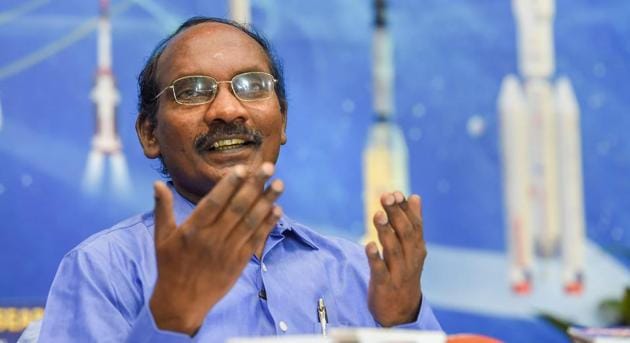ISRO set for April launch of Chandrayaan-2 after missed deadline
The Chandrayaan-2, which is set to cost about ₹800 crore, will involve unloading of a rover to study the Moon. The year is set to see 32 missions, double the 16 missions the space agency conducted last year.
The Indian Space Research Organisation (ISRO) is set to launch its second moon mission, the Chandrayaan-2, in April after the agency missed an earlier launch window in January, its chairperson K Sivan said on Friday.

The Chandrayaan-2, which is set to cost about ₹800 crore, will involve unloading of a rover to study the Moon.
“As we could not complete a few tests in time we could not make the January window. We are now looking at a launch between the middle of March and April, and it is likely to happen by the middle of April,” Sivan said during a press conference.
The year is set to see 32 missions, double the 16 missions the space agency conducted last year. And primary among these will be the GSAT-20, which apart from providing bandwidth to Jammu and Kashmir and the northeastern states, will also enable in-flight connectivity.
“GSAT-20 satellite will complete the government of India’s Digital India programme. We need to provide high bandwidth connectivity, around Gbps, to the country and GSAT-20 along with GSAT-29 and GSAT-11 will meet the requirement. And by September-October, this launch will happen. With this satellite we will provide in-flight connectivity also,” Sivan said.
Sivan also spoke about the tentative timeline for the ISRO’s ambitious Gaganyaan mission through which humans will orbit the earth for three to seven days at a cost of ₹10,000 crore.
He said the space agency would conduct two unmanned missions, in December 2020 and July 2021 before the launch of the manned mission in December 2021. The Gaganyaan mission, Sivan said, marked a major expansion of the space agency.
“This expansion is because in a conventional launch our payload is only of the satellite, but in Gaganyaan our payload will be much higher. We have to select a human being and train him and ensure that it is conducive for him to live in space and bring him back to earth,” Sivan said.
The ISRO chief said while the space agency had expertise in the engineering aspect of the mission, but crew selection, training and making the environment for the crew was new for the organisation. And sending humans to space would be the beginning as the organisation planned to look at building a space station as well, Sivan said.
“To carry out this task we have worked a new management structure. I am happy to inform you that the first time in ISRO a major centre has been formed called the Human Space Flight Centre,” Sivan said.
“The Prime Minister said the mission should happen before August 15, 2022, which will be the 75th year of Independence and we are now confirming that the mission will, in fact, happen by December 2021,” Sivan said.
Sivan said ISRO was looking at having a woman astronaut in the mission, although he did not specify how many people would be a part of it.
“We want women astronauts also to be a part of the mission. In my opinion, we have to train both men and women,” Sivan said in response to a question.
He added that while selection and preliminary training would be done in India, in the final stages foreign agencies might be involved.
The ISRO chief also said there were plans to open ground stations in neighbouring countries as well as in Russia and Japan. “We need ground stations in neighbouring countries to achieve increased accuracy in navigation systems and mainly to download satellite data and this is a normal phenomenon globally,” Sivan said.
“While I cannot name the countries in the neighbourhood, we are talking about a ground station in Russia and some systems will be put up in Japan and they will also establish ground stations here,” Sivan said.
The other major launch in 2019 will be that of the Small Satellite Launch Vehicle (SSLV), one of the smallest launches for ISRO. Sivan said it would have a payload of only 500kg and would take only 72 hours to integrate as opposed to 70 days for normal satellites and it would also require only six people to integrate it as opposed to 60.
The cost of these satellites would be around ₹30 crore, he said.
Get Current Updates on India News, Lok Sabha Election 2024 live, Infosys Q4 Results Live, Elections 2024, Election 2024 Date along with Latest News and Top Headlines from India and around the world.




